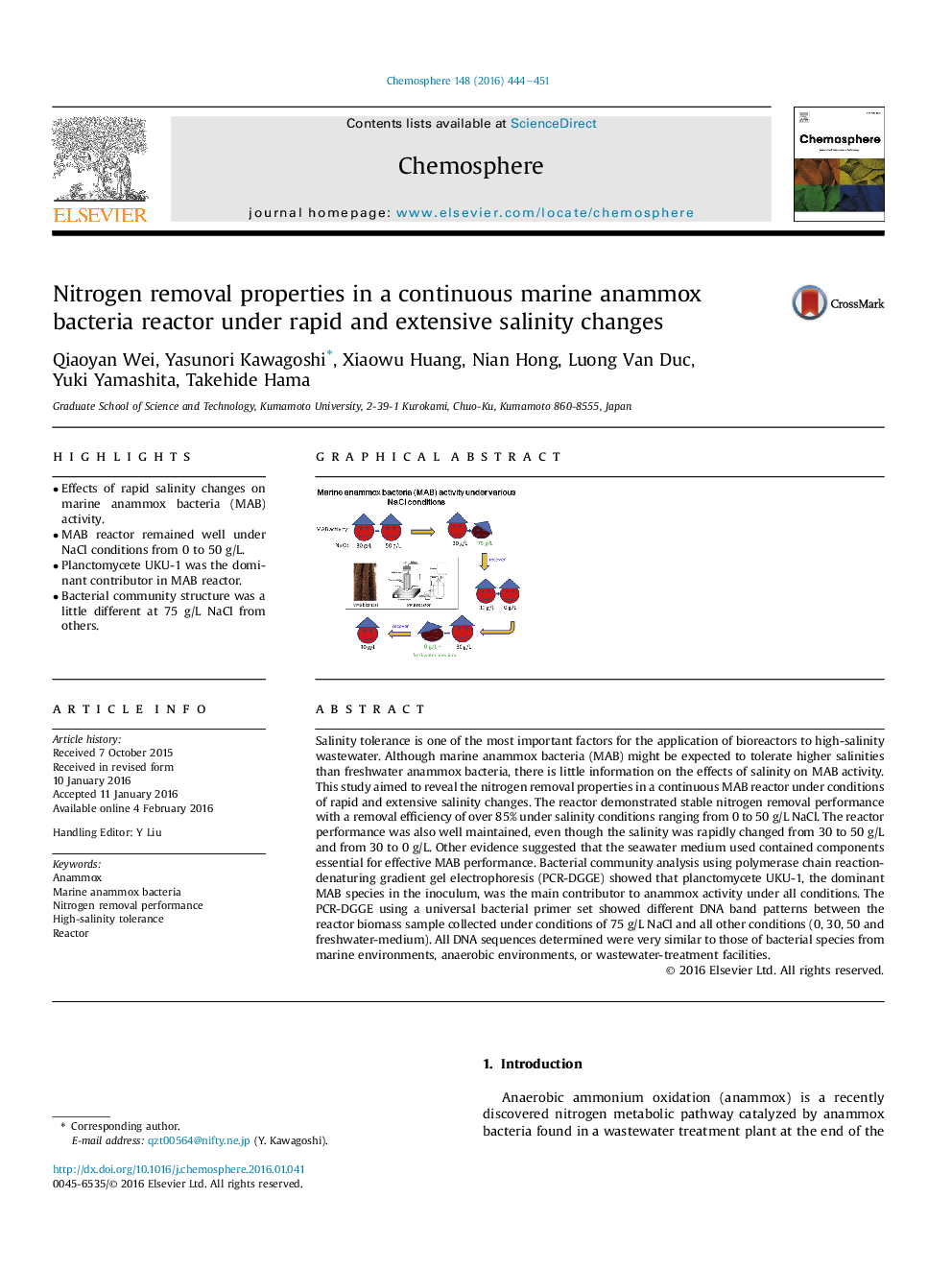| کد مقاله | کد نشریه | سال انتشار | مقاله انگلیسی | نسخه تمام متن |
|---|---|---|---|---|
| 4407864 | 1618823 | 2016 | 8 صفحه PDF | دانلود رایگان |
• Effects of rapid salinity changes on marine anammox bacteria (MAB) activity.
• MAB reactor remained well under NaCl conditions from 0 to 50 g/L.
• Planctomycete UKU-1 was the dominant contributor in MAB reactor.
• Bacterial community structure was a little different at 75 g/L NaCl from others.
Salinity tolerance is one of the most important factors for the application of bioreactors to high-salinity wastewater. Although marine anammox bacteria (MAB) might be expected to tolerate higher salinities than freshwater anammox bacteria, there is little information on the effects of salinity on MAB activity. This study aimed to reveal the nitrogen removal properties in a continuous MAB reactor under conditions of rapid and extensive salinity changes. The reactor demonstrated stable nitrogen removal performance with a removal efficiency of over 85% under salinity conditions ranging from 0 to 50 g/L NaCl. The reactor performance was also well maintained, even though the salinity was rapidly changed from 30 to 50 g/L and from 30 to 0 g/L. Other evidence suggested that the seawater medium used contained components essential for effective MAB performance. Bacterial community analysis using polymerase chain reaction-denaturing gradient gel electrophoresis (PCR-DGGE) showed that planctomycete UKU-1, the dominant MAB species in the inoculum, was the main contributor to anammox activity under all conditions. The PCR-DGGE using a universal bacterial primer set showed different DNA band patterns between the reactor biomass sample collected under conditions of 75 g/L NaCl and all other conditions (0, 30, 50 and freshwater-medium). All DNA sequences determined were very similar to those of bacterial species from marine environments, anaerobic environments, or wastewater-treatment facilities.
Figure optionsDownload as PowerPoint slide
Journal: Chemosphere - Volume 148, April 2016, Pages 444–451
